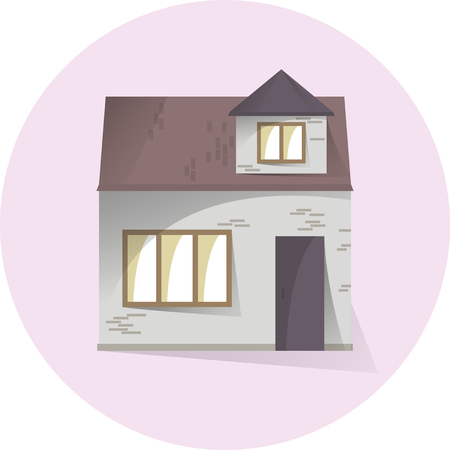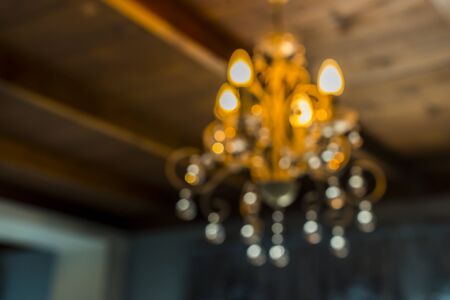Understanding Accent Lighting
Accent lighting is a powerful design tool used to draw attention to specific architectural features and décor elements within American homes. Unlike ambient lighting, which provides overall illumination for a room, or task lighting, which focuses on helping you perform specific activities like reading or cooking, accent lighting is all about creating visual interest and highlighting what makes your space unique. By using strategically placed fixtures—such as spotlights, track lights, or wall-mounted sconces—you can spotlight artwork, highlight textured walls, emphasize fireplaces, or showcase display shelves. The primary goal of accent lighting is to add depth and dimension to your interiors, making certain objects or areas stand out while enhancing the overall atmosphere. Whether you want to showcase a beautiful staircase, an exposed brick wall, or a collection of sculptures, understanding the role of accent lighting is the first step in elevating your home’s aesthetic appeal.
Choosing the Right Fixtures
When it comes to accent lighting, selecting the right fixtures is crucial for effectively highlighting your homes architectural features and décor. In the U.S., homeowners often gravitate toward versatile and stylish options that blend seamlessly with modern, rustic, or traditional interiors. Below is a quick overview of popular fixture types and their best uses for accent lighting:
| Fixture Type | Best For | Typical Placement |
|---|---|---|
| Track Lights | Highlighting art, shelves, or textured walls; adjustable heads allow precise focus | Ceilings in living rooms, hallways, or galleries |
| Sconces | Adding depth to alcoves, fireplaces, or staircases; creating ambient glow | Wall-mounted in entryways, bedrooms, or alongside architectural columns |
| Spotlights | Drawing attention to sculptures, plants, or standout furniture pieces | Mounted on ceilings, floors, or even outdoors to accentuate landscaping |
Track Lighting: Flexible & Functional
Track lighting is a staple in many American homes due to its adaptability. With adjustable lamp heads, you can direct light exactly where it’s needed—perfect for showcasing a gallery wall or illuminating intricate moldings.
Sconces: Stylish Wall Accents
Sconces provide both functional and decorative value. Whether flanking a fireplace or framing a hallway mirror, they add visual interest while casting flattering pools of light that highlight nearby textures and shapes.
Spotlights: Pinpoint Precision
If you have a particular architectural detail or piece of décor you want to feature—like a statement vase or exposed brick column—spotlights deliver focused illumination that commands attention without overwhelming the space.
Quick Tips for Fixture Selection
- Choose dimmable options for greater control over mood and intensity.
- Consider fixture finish and style to complement your existing décor.
- Opt for energy-efficient LED bulbs for longevity and lower utility bills.
Selecting the ideal accent lighting fixtures will help you effortlessly elevate your home’s unique character while ensuring every detail shines.

3. Highlighting Architectural Features
Accent lighting is a powerful tool for drawing attention to the unique architectural features of your home. Whether you want to showcase a striking fireplace, exposed beams, elegant archways, or custom built-ins, the right lighting can make these elements stand out and add character to any room.
Showcasing Fireplaces
Fireplaces are often the focal point of living spaces. Use wall-mounted sconces on either side or install recessed lights above to wash the mantel and hearth with a warm, inviting glow. Adjustable spotlights can also help highlight intricate masonry or decorative surrounds, making your fireplace a true centerpiece.
Emphasizing Exposed Beams
If your home features beautiful exposed beams, consider using LED strip lights or track lighting along their length. This not only highlights their texture and craftsmanship but also creates dramatic shadows that add depth to the ceiling. For a more rustic look, try lantern-style pendants spaced between beams.
Accentuating Archways and Built-Ins
Archways naturally guide the eye through your space. To enhance their architectural grace, position uplights at the base or use concealed LED strips along the curve. For built-in shelves or cabinets, install puck lights or small recessed fixtures inside each compartment. This not only showcases collectibles and books but also brings visual interest to otherwise overlooked areas.
By thoughtfully applying accent lighting to these architectural details, you can elevate your homes interior design and create an atmosphere that feels both sophisticated and welcoming—all while highlighting what makes your space truly unique.
4. Showcasing Art and Décor
Accent lighting is a powerful way to bring out the best in your artwork, sculptures, and decorative pieces. By strategically placing lights, you can create focal points that draw the eye and add drama to any room. To showcase art on walls, use picture lights or adjustable track lighting aimed directly at the piece. This not only highlights the colors and textures but also prevents distracting shadows.
For sculptures or three-dimensional décor, consider spotlights or uplights placed at the base or behind the object. This technique creates depth and emphasizes the form of the sculpture. Shelves can be illuminated with LED strip lighting or puck lights installed underneath each level, making collectibles and cherished items stand out without overwhelming the space.
Popular Accent Lighting Techniques for Décor
| Décor Element | Recommended Lighting Type | Placement Tips |
|---|---|---|
| Wall Art | Picture Lights, Track Lights | Position above or to the side; angle light to avoid glare |
| Sculptures | Spotlights, Uplights | Place at base or behind; use narrow beam for focus |
| Shelves/Bookcases | LED Strips, Puck Lights | Install under shelves; choose warm white for cozy look |
| Niches/Display Cases | Recessed Mini Lights, Adjustable Spots | Aim lights toward displayed item; use dimmers for flexibility |
When lighting decorative elements, always consider the color temperature and intensity of your bulbs. Warmer tones (2700K–3000K) are ideal for creating an inviting atmosphere, while cooler tones (3500K–4000K) can make colors pop in modern settings. Use dimmers whenever possible to tailor the effect throughout the day and set the perfect mood for any occasion.
5. Layering Lighting for Visual Impact
When it comes to creating a truly dynamic and inviting space, mastering the art of layering lighting is essential. Accent lighting works best when its thoughtfully combined with ambient and task lights to enhance both the functionality and the visual appeal of your home. By understanding how each type of lighting serves a specific purpose, you can create depth, interest, and atmosphere in any room.
Blending Ambient, Task, and Accent Lights
Ambient lighting provides the overall illumination in a space—think ceiling fixtures or recessed lights that wash the room in a comfortable glow. Task lighting, like under-cabinet kitchen lights or desk lamps, focuses on areas where you need extra brightness for activities such as reading or cooking. Accent lighting, meanwhile, is all about drawing attention to architectural features or décor pieces you want to showcase, such as artwork, textured walls, or built-in shelves.
Creating Depth and Dimension
The real magic happens when you layer these different types of lighting together. For example, start with a warm ambient light to set the tone. Next, add task lighting where needed for practicality. Finally, position accent lights strategically to highlight unique design elements—a spotlight over a statement sculpture or LED strips tucked into alcoves. This combination prevents flatness and brings out the rooms character.
Tips for Effective Layering
To achieve balance without overwhelming the senses, use dimmers on your ambient and accent lights so you can adjust the mood throughout the day. Don’t be afraid to experiment—mix up light temperatures (warm vs. cool) based on the vibe you want to evoke. Remember that less can be more; avoid cluttering your space with too many competing sources of light. With thoughtful layering, you’ll not only illuminate your home but also enhance its architectural beauty and décor in true American style.
6. Smart Controls and Energy Efficiency
In today’s American homes, smart technology has made it easier than ever to manage accent lighting for highlighting architectural features and décor. Smart lighting solutions, such as Wi-Fi enabled bulbs, smart switches, and integrated home automation systems, allow you to control your accent lights with a simple tap on your smartphone or through voice commands with devices like Amazon Alexa or Google Home.
One of the biggest advantages of using smart controls is the convenience they offer. For example, you can schedule accent lights to turn on automatically in the evenings to showcase your favorite wall art or highlight a statement fireplace, then dim or turn them off at bedtime—all without getting up from the couch. Many Americans also use motion sensors for hallways or entryways, ensuring accent lighting is only used when needed.
Energy efficiency is another major benefit. With features like dimming capabilities, timers, and energy usage tracking, smart lighting systems help you minimize waste and lower utility bills. LED bulbs—commonly used for accent lighting—are inherently energy-efficient and last much longer than traditional incandescent bulbs. This means you can enjoy dramatic highlights and ambiance while being mindful of your carbon footprint.
Whether you’re illuminating built-in shelves, spotlighting artwork, or casting a warm glow on exposed brick, integrating smart controls into your accent lighting design empowers you to create dynamic spaces that look great and function efficiently in everyday American life.


